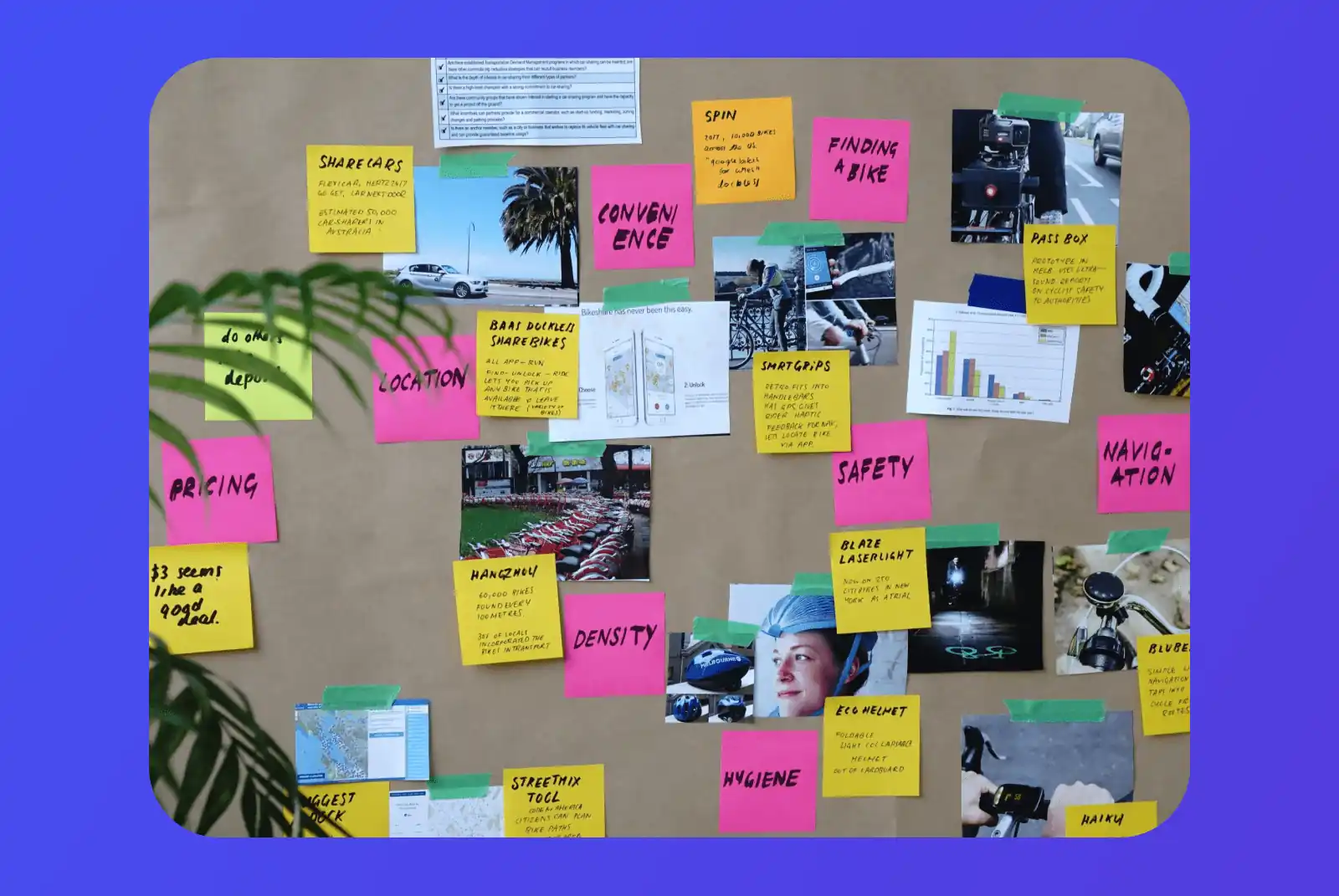Teaching Business English: Strategies for engaging and empowering students

Business English students have different goals for improving their English skills, such as career growth, working with global markets, entertaining clients, collaborating with colleagues, and exploring new markets. It's important to customize lessons based on their needs instead of just teaching language without a clear purpose.
Workee experts had the pleasure of speaking with Maury, a seasoned Business English coach who has developed effective strategies to inspire and motivate her students. In this interview, she shares eight strategies and practical examples to help teachers keep their earners engaged with the language and improve their English-speaking skills.
1. Emphasize the use of high-frequency vocabulary in a work context

The term 'high-frequency vocabulary' refers to commonly used words and phrases in English, especially in a business setting. These phrases contain business-specific collocations, which usually go together, such as 'attend a meeting,' 'deliver a presentation,' or 'close a deal.' Studies have shown that focusing on high-frequency vocabulary tailored to the workplace can significantly improve language acquisition and comprehension.
You can introduce such phrases that students can relate to in real-life situations. For instance, in a lesson focusing on corporate meetings, you could present a mock meeting scenario where students 'attend a meeting' to discuss the 'quarterly sales report.' This allows learners to naturally pick up on phrases like 'discuss an agenda,' 'present a report,' and 'close a meeting.'
These phrases are reinforced throughout the lesson and, in subsequent classes, integrated into different activities and exercises. Practical activities such as role-playing also help reinforce high-frequency vocabulary.
For instance, group the class and assign each a different scenario, such as preparing and 'delivering a presentation' on a new product or 'negotiating a contract' with a new client. This allows students to use and practice high-frequency vocabulary in a safe environment, improving their fluency and boosting their confidence.
Over time, students who regularly practice using high-frequency vocabulary become more skilled at communicating effectively in business scenarios. They can express their ideas confidently and clearly, which makes them better language learners and more capable professionals in the business world.
2. Foster effective vocabulary learning

Studies have shown that learners can comfortably absorb approximately 8-10 new words in each lesson. This quantity is optimal since it is manageable for the learner and gradually enhances their vocabulary. To facilitate better comprehension and retention, it is recommended to introduce new words within their context.
For example, when teaching the term 'ledger,' it is advisable to define and demonstrate how it can be used in a sentence such as 'The accountant meticulously updated the ledger.' This teaching method enables learners to understand how the new words can be incorporated into their daily business language use.
Encouraging learners to personalize their learning is crucial, and one way to achieve this is by having them create sentences using newly learned vocabulary. For example, when introducing the word "ledger," learners can come up with sentences related to their work experiences, such as "I reviewed the ledger before finalizing the financial report." This activity strengthens their understanding of the word and helps them relate it to their own experiences, fostering a deeper connection with the new vocabulary.
Additionally, the same research showed that repeated exposure to new vocabulary is essential for long-term retention. To reinforce new vocabulary, it should be revisited in subsequent lessons through quick revision exercises, integrative activities such as group discussions where learners use the new words, or as part of homework assignments.
3. Encourage dialogue between students
Ample speaking time is indeed a crucial component in mastering a new language. A study by Swain and Lapkin shows that language output is integral to language acquisition.
This principle can be implemented in the classroom by facilitating activities that prioritize student speaking. Role plays and dialogues are excellent tools for this.
For example, after teaching business-related vocabulary and phrases, students can be paired and given a scenario, such as negotiating a business deal or resolving a customer complaint. They can then utilize the vocabulary and phrases learned in these role-play scenarios.
This approach offers hands-on practice in a safe and supportive environment, allowing students to test and refine their speaking skills. Moreover, it's a dynamic way to encourage active learning and enhance students' fluency and confidence in business English.
4. Include speaking tasks

Language education experts highlight the role of task-based learning in successful language acquisition. This strategy equips learners with the tools and frameworks to navigate speaking tasks.
A practical way to implement this is by providing model dialogues for different business scenarios. For instance, in a unit focused on negotiation skills, a teacher might present a dialogue demonstrating successful negotiation tactics. Learners can study this model, identify key phrases and strategies, and create negotiation dialogue.
In addition, scaffolded activities are beneficial. These are tasks that start simple and gradually increase in complexity.
For example, students might initially fill in the blanks in scripted dialogue, then progress to creating responses given cues. Finally, they might conduct a freeform role-play.
This approach offers structure, enabling learners to engage confidently in language production. It also encourages risk-taking in a supportive learning environment.
5. Incorporate practical work skills in lessons
It is important to integrate practical work skills into Business English lessons. Learning becomes engaging and immediately applicable by combining real-world scenarios like critical thinking, problem-solving, teamwork, drafting professional emails, or preparing business presentations.
For example, during a lesson on email etiquette, students might analyze a model of a professionally written email. They can then be tasked with crafting their business email, considering factors such as formal tone, concise language, and proper formatting. In doing so, they gain hands-on experience in vital business communication skills, increasing their motivation and appreciation for the real-world implications of their learning.
6. Teach language in a functional way
Introducing functional languages, such as standard phrases and greetings, is crucial in equipping learners for real business interactions. Regularly employed in business settings, these expressions enable learners to converse more fluently and naturally.
For example, in a lesson, you may present common phrases used in meetings like "I agree with..." or "Could you clarify...?" Learners then practice these phrases in a simulated meeting scenario, boosting their ability to use such language effectively in a real-world context.
7. Leverage technology to teach

Incorporating digital tools into the learning process can significantly bolster language acquisition. Tools ranging from project collaboration software to video conferencing platforms can support authentic communication and project-based learning.
For example, learners could be tasked with creating a project plan using a digital tool like Jira, necessitating communication and collaboration in English. This mirrors real-world business scenarios and enables students to apply their language skills in a practical, relevant context.
8. Encourage reflection practice
Introducing reflective practice into learning can have significant benefits. It has been found that reflecting on their progress helps learners identify areas of improvement, facilitating their learning skills and promoting continuous growth.
For instance, after completing a business presentation task, students could be asked to reflect on their performance. They might consider questions such as, "How well did I communicate my main points?", "What language structures could I have used more effectively?" and "How can I improve for next time?" This approach encourages learners to take ownership of their learning process and stimulates further development.
What advice would you give to teachers looking to go into business teaching?
If you're a teacher looking to transition into business teaching, here are my top 5 advice to consider:
Understanding: As a business English teacher, you should have a general understanding of business practices, your students' industry, and especially your students' culture.
Flexibility: being flexible is key since we teach people with extremely busy lives. Therefore, the instructor should be ready to deal with changes and interruptions.
Stay updated on industry trends: Keep yourself informed about the latest developments and trends in the business world. Read business publications, and follow industry blogs. This knowledge will help you deliver up-to-date and relevant content to your students.
Develop a student-oriented teaching course: It is essential to have a student-oriented approach where the teacher acts as a facilitator.
Pursue professional certifications: Consider obtaining professional certifications in business education or specific business disciplines. These certifications can enhance your credentials and demonstrate your commitment to professional development.

Thank you, Maury, for sharing your insights and supporting Workee!
You can connect with Maury and learn more about her work on Facebook, or Instagram.


